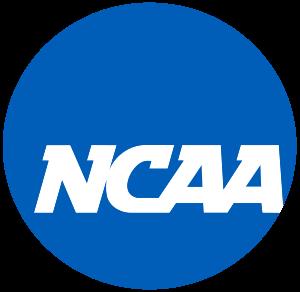Division I (D-I) is the highest level of intercollegiate athletics sanctioned by the National Collegiate Athletic Association (NCAA) in the United States. D-I schools include the major collegiate athletic powers, with larger budgets, more elaborate facilities, and more athletic scholarships than Divisions II and III as well as many smaller schools committed to the highest level of intercollegiate competition. This level was once called the University Division of the NCAA, in contrast to the lower level College Division; this terminology was replaced with numeric divisions in 1973. The University Division was renamed Division I, while the College Division was split in two; the College Division members that offered scholarships or wanted to compete against those who did became Division II, while those who did not want to offer scholarships became Division III. For football only, Division I was further subdivided in 1978 into Division I-A (the principal football schools) and Division I-AA; those schools not sponsoring football remained as simply Division I. In 2006, Division I-A and I-AA were renamed "Football Bowl Subdivision" (FBS) and "Football Championship Subdivision" (FCS), respectively. FBS teams are allowed a maximum of 85 players receiving athletically-based aid per year, with each player allowed to receive up to a full scholarship; FCS teams have the same 85-player limit as FBS teams, but are only allowed to give aid equivalent to 63 full scholarships. FCS teams are allowed to award partial scholarships, a practice technically allowed but essentially never used at the FBS level. FBS teams also have to meet minimum attendance requirements (average 15,000 people in actual or paid attendance per home game), while FCS teams do not need to meet minimum attendance requirements. Another difference is post season play. Since 1978, FCS teams have played in a college football playoff system to determine a NCAA-sanctioned national champion; the FBS teams play in bowl games where various polls rank the number one team after the conclusion of the bowl games. Starting with the 2014 postseason, a four-team playoff called the College Football Playoff, replaced the previous one game championship format. Even so, Division I FBS football is still the only NCAA sport in which a yearly champion is not determined by an NCAA-sanctioned championship event. For the 2014-15 school year, Division I contained 345 of the NCAA's 1,066 member institutions, with 125 in FBS, 125 in FCS, and 95 non-football schools with six additional schools in transition from Division II to Division I. There was a moratorium on any additional movement up to D-I until 2012, after which any school that wants to move to D-I must be accepted for membership by a conference and show the NCAA it has the financial ability to support a D-I program. All D-I schools must field teams in at least seven sports for men and seven for women or six for men and eight for women, with at least two team sports for each gender. Division I schools must meet minimum financial aid awards for their athletics program, and there are maximum financial aid awards for each sport that a Division I school cannot exceed. Several other NCAA sanctioned minimums and differences that distinguish Division I from Divisions II and III. Each playing season has to be represented by each gender as well. There are contest and participant minimums for each sport, as well as scheduling criteria. For sports other than football and basketball, Division I schools must play 100 percent of the minimum number of contests against Division I opponents—anything over the minimum number of games has to be 50 percent Division I. Men's and women's basketball teams have to play all but two games against Division I teams; for men, they must play one-third of all their contests in the home arena. In addition to the schools that compete fully as D-I institutions, the NCAA allows D-II and D-III schools to classify one men's and one women's sport (other than football or basketball) as a D-I sport, as long as they sponsored those sports before the latest rules change in 2011. Also, Division II schools are eligible to compete for Division I national championships in sports that do not have a Division II national championship, and in those sports may also operate under D-I rules and scholarship limits.




Comment
0